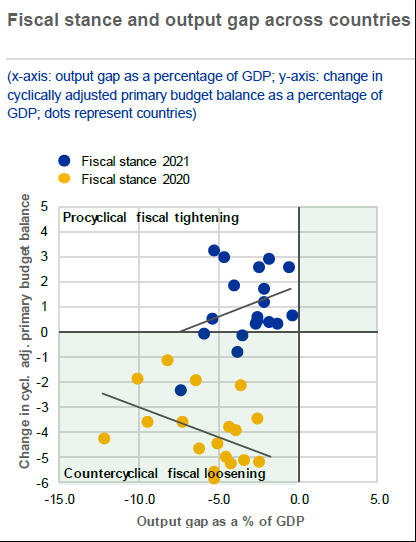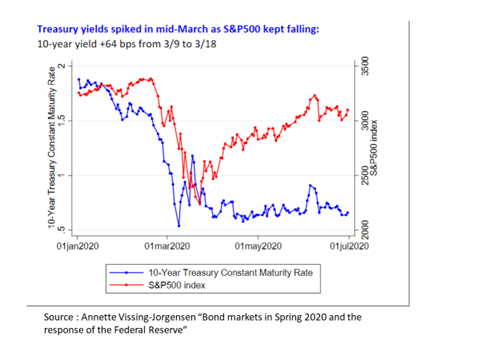
As a package of measures had been promised, markets were able to anticipate the ECB´s decisions ± correctly. The longer horizon for the TLTROs was perhaps a bit of a surprise but is the more relevant measure supporting credit supply, despite no change in the tier multiplier. 1/
The increase and extension of PEPP (and APP) offer a way to avoid any future cliff-effect by allowing a gradual phase-out of the programme. QE, when sovereign yields are already so low, has per se diminishing returns in terms of its impact on the economic recovery 2/
Further QE can, however, be effective if fiscal policy continues to be suitably expansionary, leading to sizable new debt issuance.The ECB “presence for longer”, is, of course, reassuring in that perspective. An insufficient fiscal stimulus continues to be a big risk for 2021. 3/
When interest rates attain their effective lower bound, fiscal and monetary policies become complementary and, even if independently decided, should collaborate as a necessary condition for getting a robust recovery and a normalisation of inflation from the present low levels.4/
Some observers continue to try to make the case that the bilateral euro/dollar exchange rate should concern the ECB, but what counts is the rate against the currencies of trade partners. A chart from @johnauthers shows how the euro has depreciated against other G10 countries.5/ 

Projections point to inflation at 1% in 2021, but pent-up demand, damaged supply chains, higher relocation costs and a Spring oil base-effect, can provoke one-off price spikes, increasing headline inflation. It is crucial not to confuse this with a higher inflation process 6/6
• • •
Missing some Tweet in this thread? You can try to
force a refresh






